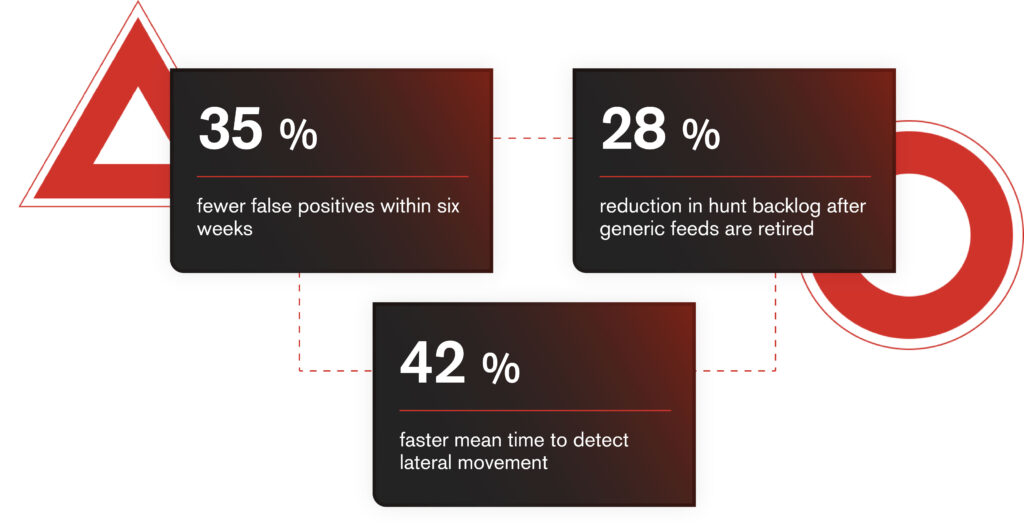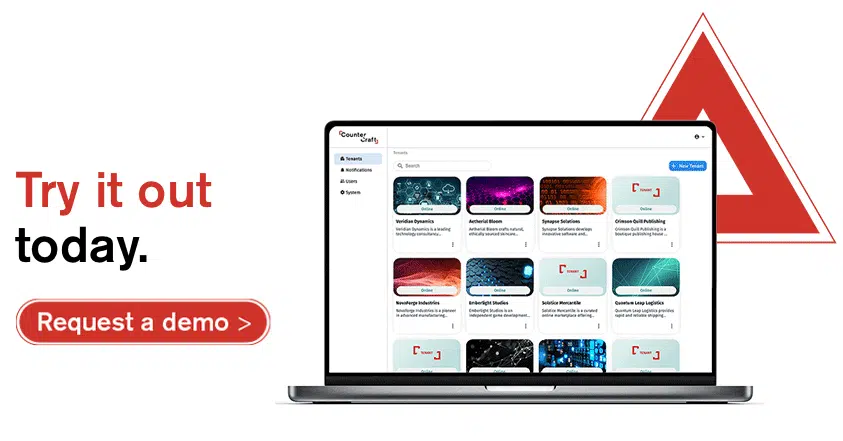Public threat feeds age out in hours, forcing security teams to chase obsolete indicators. Running deception campaigns inside realistic digital twins lets defenders watch attackers create fresh, context-rich threat Intelligence in real time and stream it to SIEM, XDR and SOAR. This method harvests attacker behavior before they move laterally, effectively turning their own tactics into actionable intelligence. The result: fewer false positives, faster investigations, and a measurable improvement in overall security posture.
Threat intelligence services pump millions of indicators into SOC dashboards every week, yet most lose value long before analysts can react. The 2024 SANS Detection & Response Survey found that almost 80 percent of commodity IP- and domain-based IoCs disappear from telemetry within ten days, and nearly half become inactive in under forty-eight hours. Meanwhile, cloud automation lets adversaries spin up and discard infrastructure in minutes, turning yesterday’s blocklists into little more than noise.
Attackers aren’t reinventing the wheel: they’re reusing whatever still works. Some of the same exploits from twenty years ago are still delivering results. Meanwhile, threat feeds show up packed with outdated artifacts that have nothing to do with what’s happening in your network right now. Analysts end up wasting hours sifting through irrelevant noise instead of acting on live, meaningful signals.
Attackers rotate IP addresses, domains, and TLS certificates daily, while security teams chase ghosts and rack up false positives. This endless collect-correlate-discard treadmill not only drains budgets but also erodes trust, just when boards are demanding precise, reliable metrics grounded in actionable threat intelligence. Modern APT crews don’t operate like shadowy wizards; they run like well-funded startups, setting KPIs, tracking success, and blending zero-days with decades-old exploits.
Backward-looking threat feeds simply can’t keep up. The only way to close the gap is with live telemetry that watches attackers in your own environment, catching them in the act before they move laterally.
Think of it like an apartment door: if a neighbor wanders in, you chat; if a burglar walks out with the television, you call SWAT. Deception provides that situational awareness, letting CISOs calibrate proportionate responses and avoid costly over-reaction. IBM’s 2024 Cost of a Data Breach report pegs the global average at 4.88 million US dollars, and every hour of undetected access inflates the bill.
Then there’s the matter of fines imposed by regulators. The US SEC’s cyber-incident disclosure rule took effect in late 2023, and enforcement followed swiftly: in September 2024 the agency charged four public companies with misleading cyber disclosures, issuing penalties up to USD 4 million.
Deception-Generated Threat Intelligence: Unique by Design
An alternative is to generate threat Intelligence where attackers operate. Security teams deploy digital twins of crown-jewel assets: finance systems that move revenue, customer databases full of PII and Kubernetes clusters running critical micro-services. Each twin mirrors the real thing down to naming conventions and API responses yet lives inside a sealed, fully monitored segment.
Deception acts like the stitch in time that saves nine: spotting the intruder early makes everything else exponentially cheaper. The digital twin is seeded with convincing credentials and realistic data, so adversaries behave exactly as they would in a real production environment. Every packet, command, and API call is captured with forensic precision, instantly enriching the organization’s Threat Intelligence pool.
Telemetry is tagged on the fly, mapped to MITRE ATT&CK and exported in STIX or JSON for ingestion by existing security controls such as, SIEM, XDR and SOAR. Because engagement unfolds inside a deception environment, the resulting intelligence is organization specific, real time and audit ready, closing the loop between detection, hunt and response in a way generic feeds never can.
From Decoy to Detection in Five Steps
CounterCraft converts every interaction with a digital twin into high-fidelity threat intelligence through this machine-speed pipeline:
- The attacker triggers telemetry inside the twin.
- CounterCraft tags artifacts and maps them to MITRE ATT&CK.
- Indicators export automatically in STIX, JSON or syslog.
- SIEM or TIP ingests and scores the indicators.
- XDR and SOAR launch blocks or playbooks.
Why it matters: EDR and NDR tools excel at endpoint and network telemetry, but deception adds the attacker’s intent and full command chain, which is context they cannot generate on their own. The loop executes in seconds, turning live intelligence into blocked threats and updated defenses without analyst intervention.
Measuring Impact and Scaling Deception-Driven Threat Intelligence
Security leaders need one narrative that links hard metrics, board-level ROI and a repeatable plan for success. Deploying deception-generated intelligence delivers measurable gains, and the same telemetry supplies the evidence boards demand.
Proven performance uplift
- 35 percent fewer false positives within six weeks
- 42 percent faster mean time to detect lateral movement
- 28 percent reduction in hunt backlog after generic feeds are retired
- Faster containment directly lowers investigation cost, as shown in BakerHostetler 2024 report.
The ROI is board-ready, demonstrated by the capture and automatic blocking of unique IOCs, a significant reduction in dwell time compared to industry peers, and a higher percentage of incidents resolved without analyst intervention.
Achieving this starts with mapping and creating digital twins of high-value assets along common attack paths, then deploying deception twins seeded with realistic credentials and data. Telemetry is integrated seamlessly via STIX or JSON into SIEM, XDR, and SOAR platforms, while correlation rules are fine-tuned to prioritize high-confidence deception signals. Continuous improvement is ensured by reviewing and iterating weekly, with quarterly rotation of storylines to maintain freshness.
By connecting these measurable performance gains to a lightweight, repeatable implementation plan, security leaders can quickly demonstrate value, forecast future impact, and confidently justify ongoing investment in deception-driven threat intelligence.
CounterCraft: Specific, Actionable Threat Intelligence Powered by Deception
CounterCraft delivers specific, actionable threat intelligence by creating digital-twin campaigns that look and feel real, luring adversaries to reveal their playbooks without touching production systems. Every interaction is captured, enriched and streamed in real time, giving security teams the clarity to act, the control to disrupt and the confidence to defend forward.
Captured telemetry is auto-formatted in STIX or JSON and pushed into Splunk, Microsoft Sentinel, CrowdStrike Falcon and SOAR workflows. Customers report zero false positives, rapid cloud deployment and autonomous attack-path mapping that keep lean SOCs ahead of fast-moving threats. Built-in dashboards translate live intelligence into board-ready KPIs and compliance evidence for frameworks such as NIS 2, DORA and ISO 27001.
Key outcomes
- Proactive detection: digital twins trap attackers early and convert intrusions into high-fidelity threat intelligence.
- Reduced dwell time: real-time telemetry shrinks the window for lateral movement and data theft.
- Fewer false positives: high-confidence signals free analysts from alert fatigue and improve MTTR.
- Audit-ready insight: dashboards map live intelligence to regulatory controls and prove ROI to boards and auditors.
Trade stale feeds for fresh, environment-specific threat intelligence. Book a CounterCraft demo today to see how you can trap adversaries in real time and turn every attacker move into measurable risk reduction.


